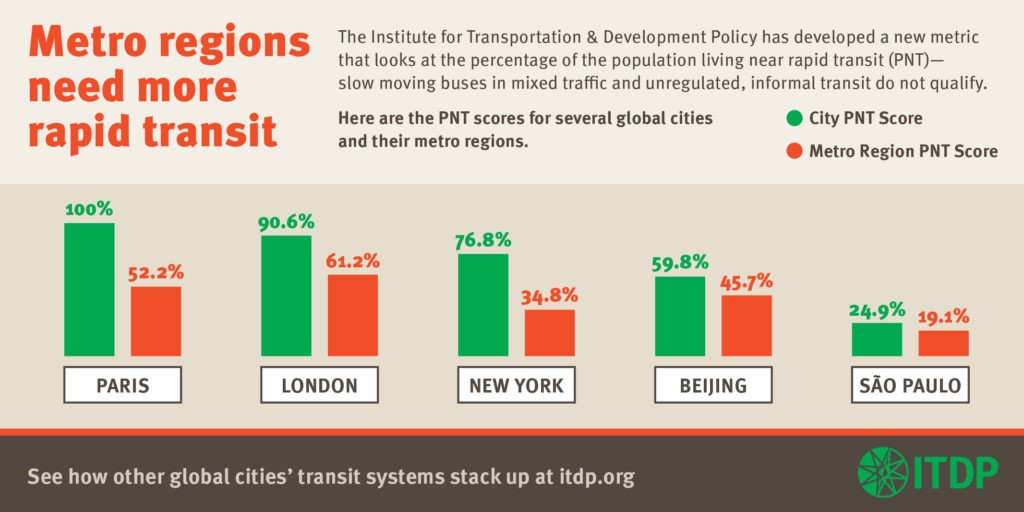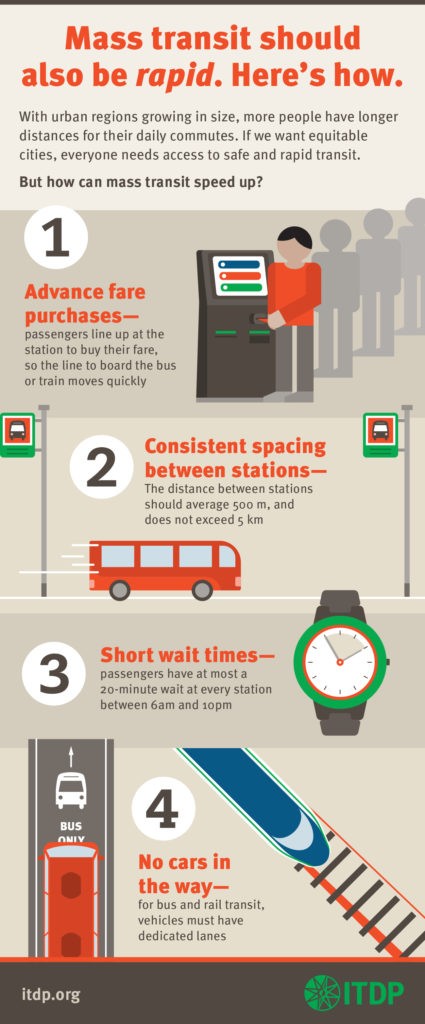Jakarta Post – A report by ITDP showed that Greater Jakarta have much work to do to provide the population with decent public transport.
A report by the Institute for Transportation and Development Policy (ITDP) presented at the Habitat III summit in Quito showed that Greater Jakarta is among cities in the world that have much work to do to provide the population with decent public transportation.
Greater Jakarta, which includes the satellite cities of Depok, Tangerang, South Tangerang, Bogor and Bekasi, provides decent public transportation for only 16 percent of its population of about 28 million people.
Out of the 10-million population of Jakarta itself, 44 percent live near rapid transit access points.
The report, “People Near Transit: Improving Accessibility and Rapid Transit Coverage in Large Cities,” introduced a metric called people near transit (PNT) to measure the population that enjoys easy access to public transportation. Easy access means living within 1 kilometer or 10 to 15 minutes of walking from the nearest rapid transit stop.
The report surveyed megacities and satellite cities and showed that Paris received a perfect score (100 percent), followed by Barcelona (99 percent) and Madrid (92 percent). Cities at the bottom included Washington D.C. (57 percent), Beijing (60 percent) and Jakarta (44 percent). But when the survey included the metropolitan area Paris score dropped to 50 percent, Barcelona to 76 percent and greater Jakarta 16 percent.
“The PNT metric illustrates how unplanned urban and suburban growth focuses on automobiles and only those who can afford to drive,” said Clayton Lane, the chief executive officer of ITDP.
ITDP’s Indonesia country director, Yoga Adiwinarto, said many city administrations ignored problems in suburbia or in border areas. “Every big city in Indonesia, including Jakarta, has satellite cities, where the majority of the population cannot reach the city center. This is where cooperation between the Jakarta administration and neighboring administrations like Bogor, Tangerang, Depok and Bekasi becomes important,” Yoga said in a release made available on Tuesday.
Among the bottom cities in the report are greater Johannesburg with 9 percent, Los Angeles Metro with 11 percent and the Washington D.C. metro area with 12 percent.


